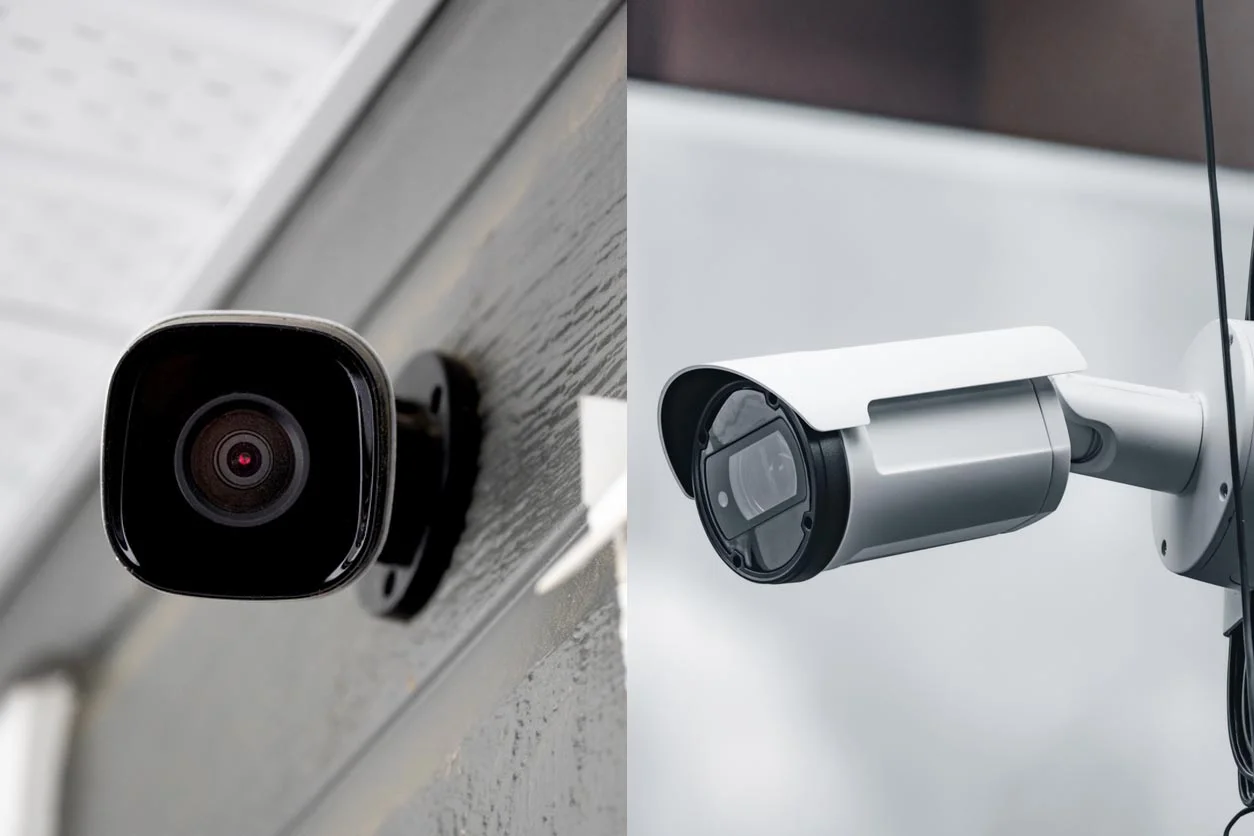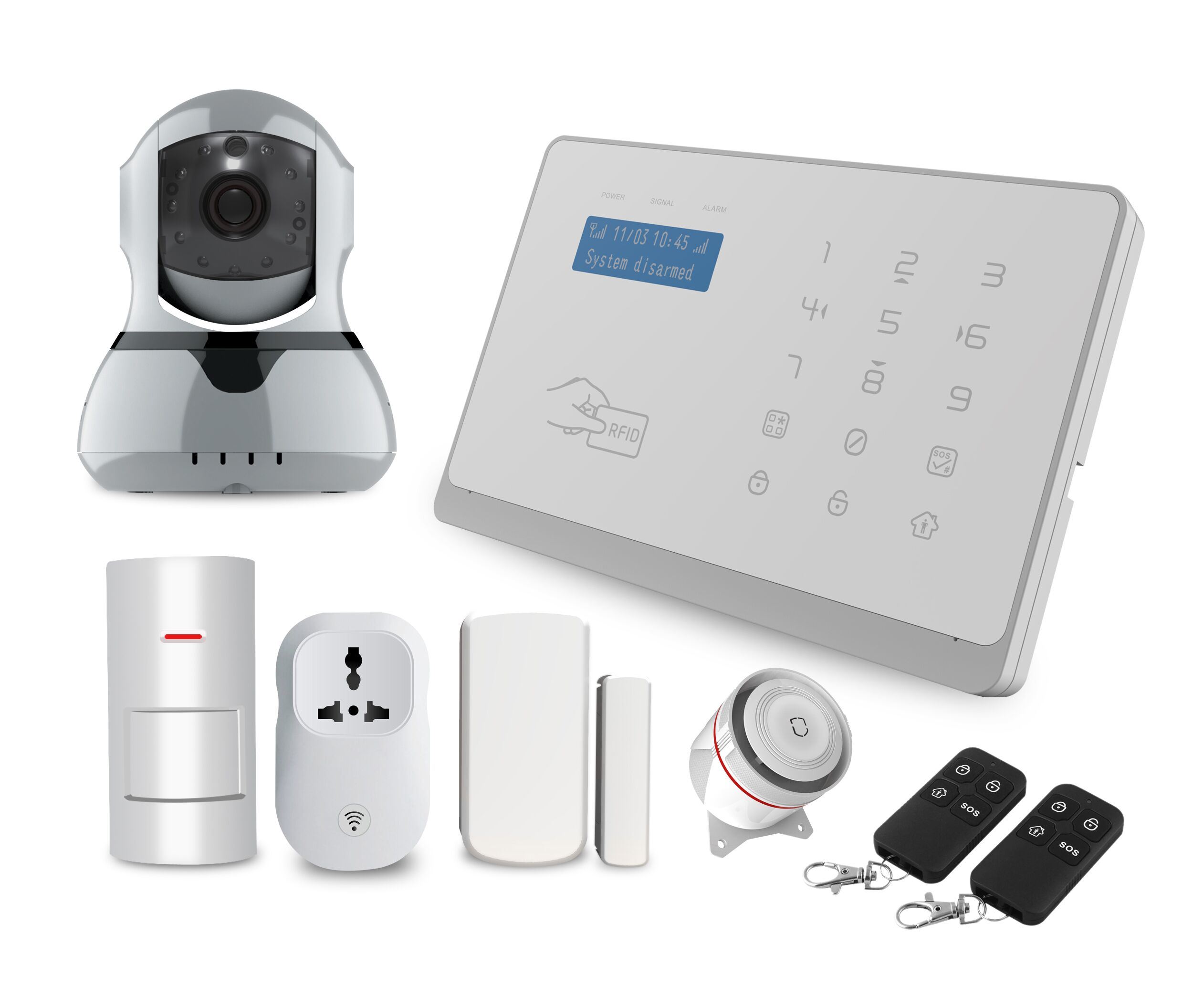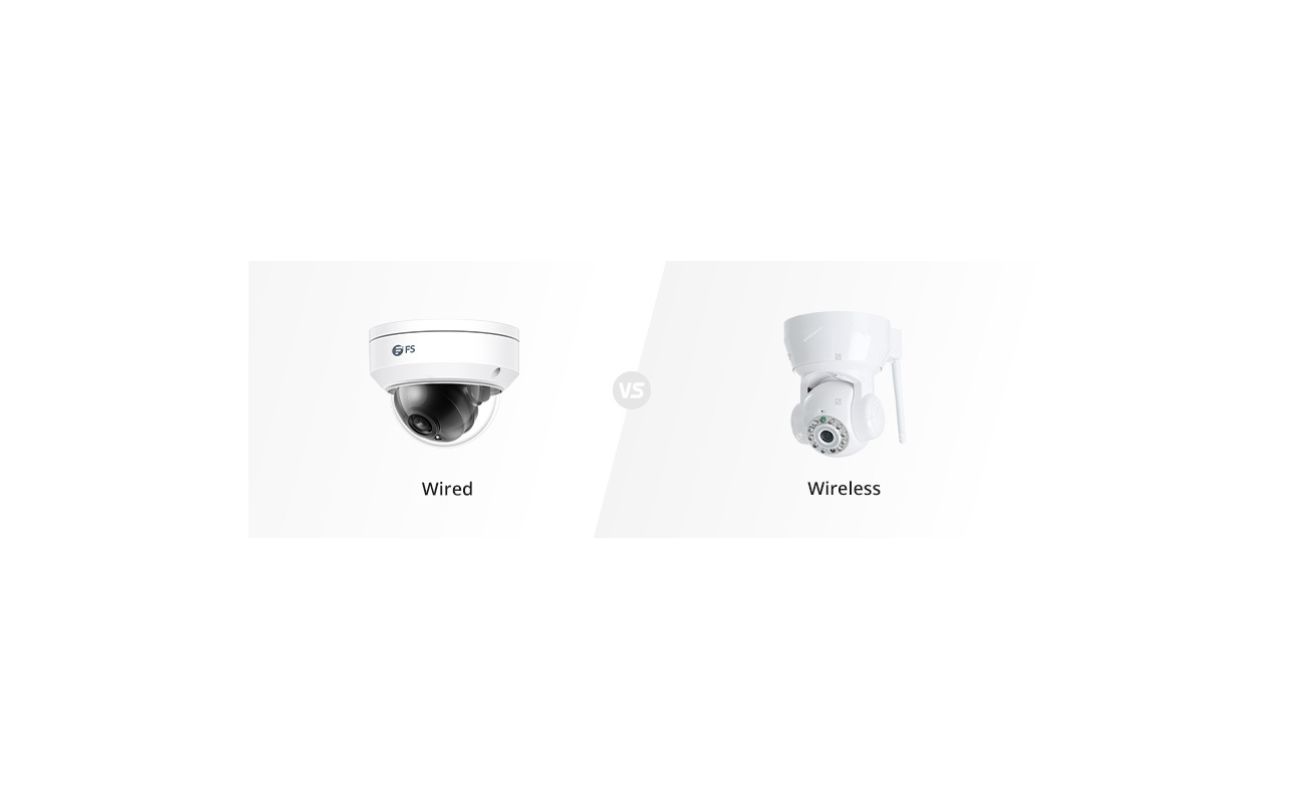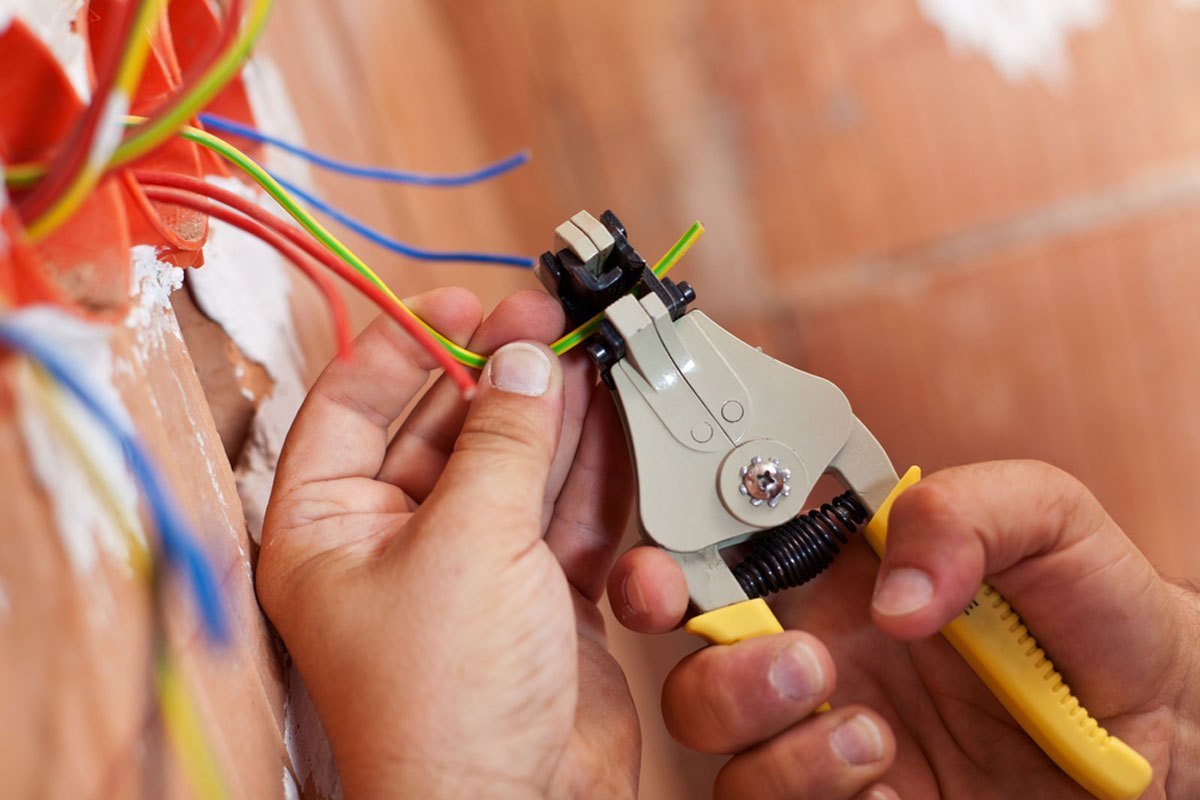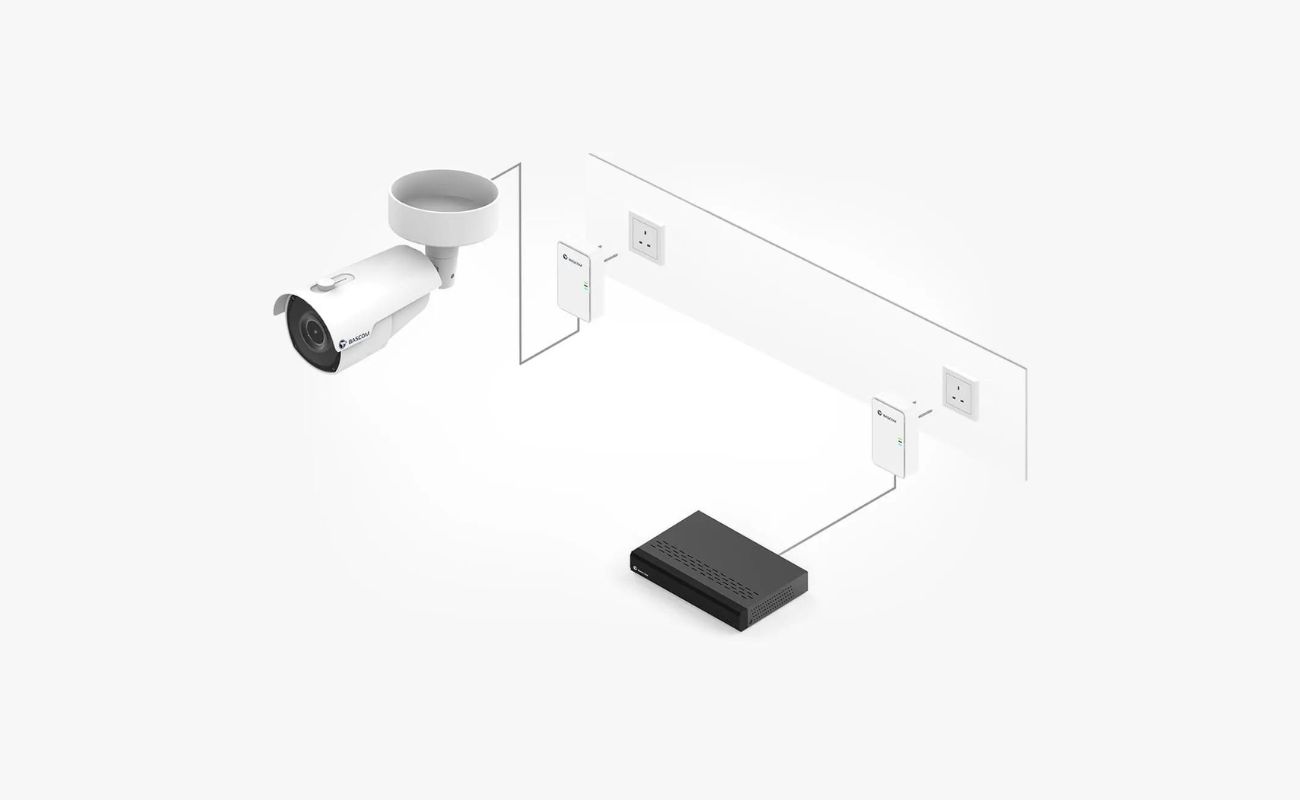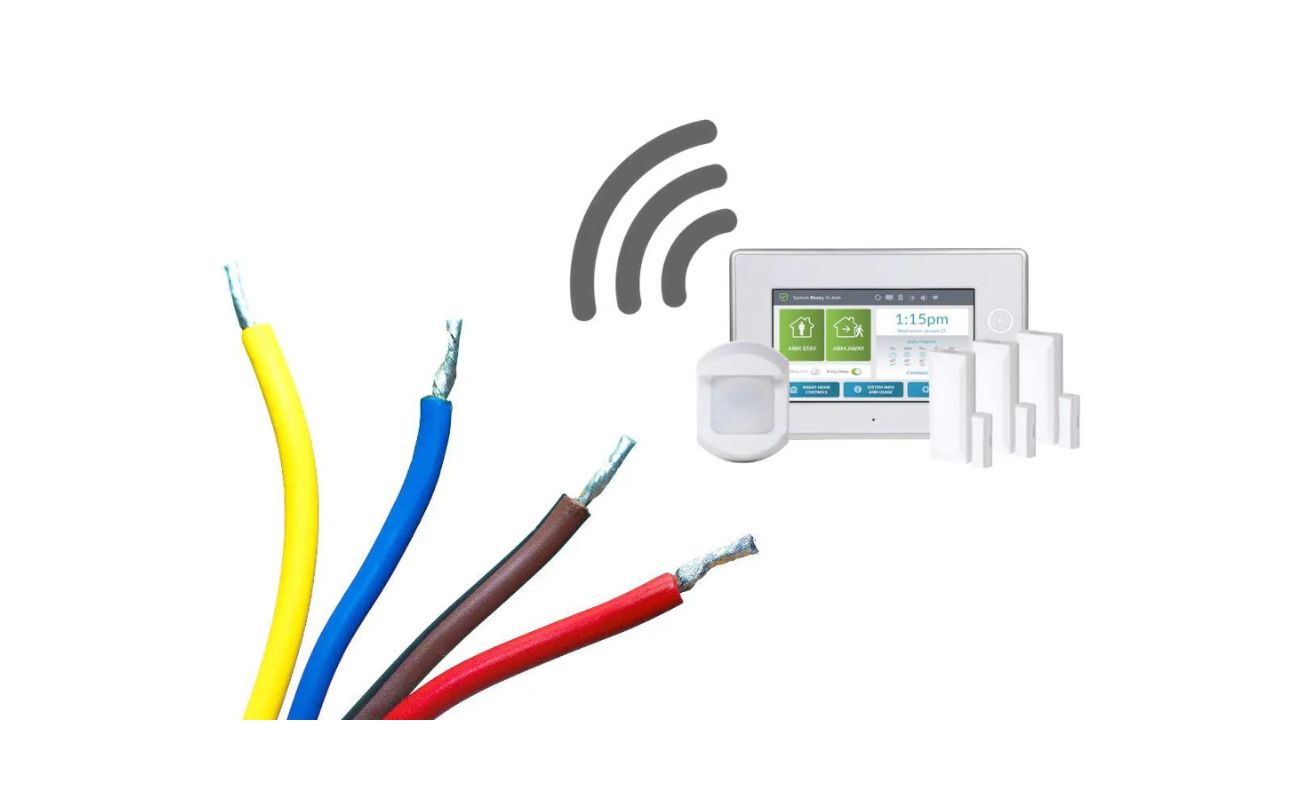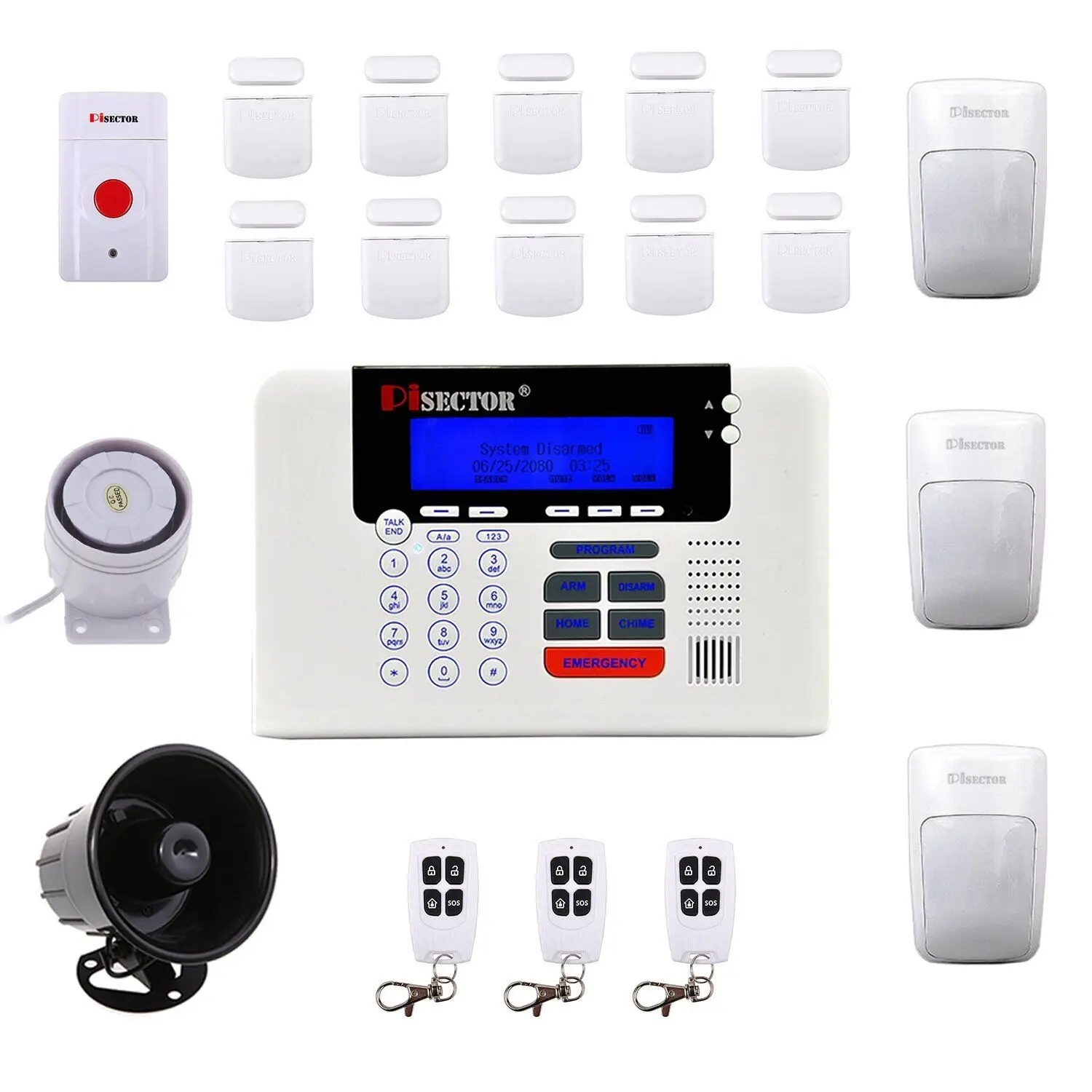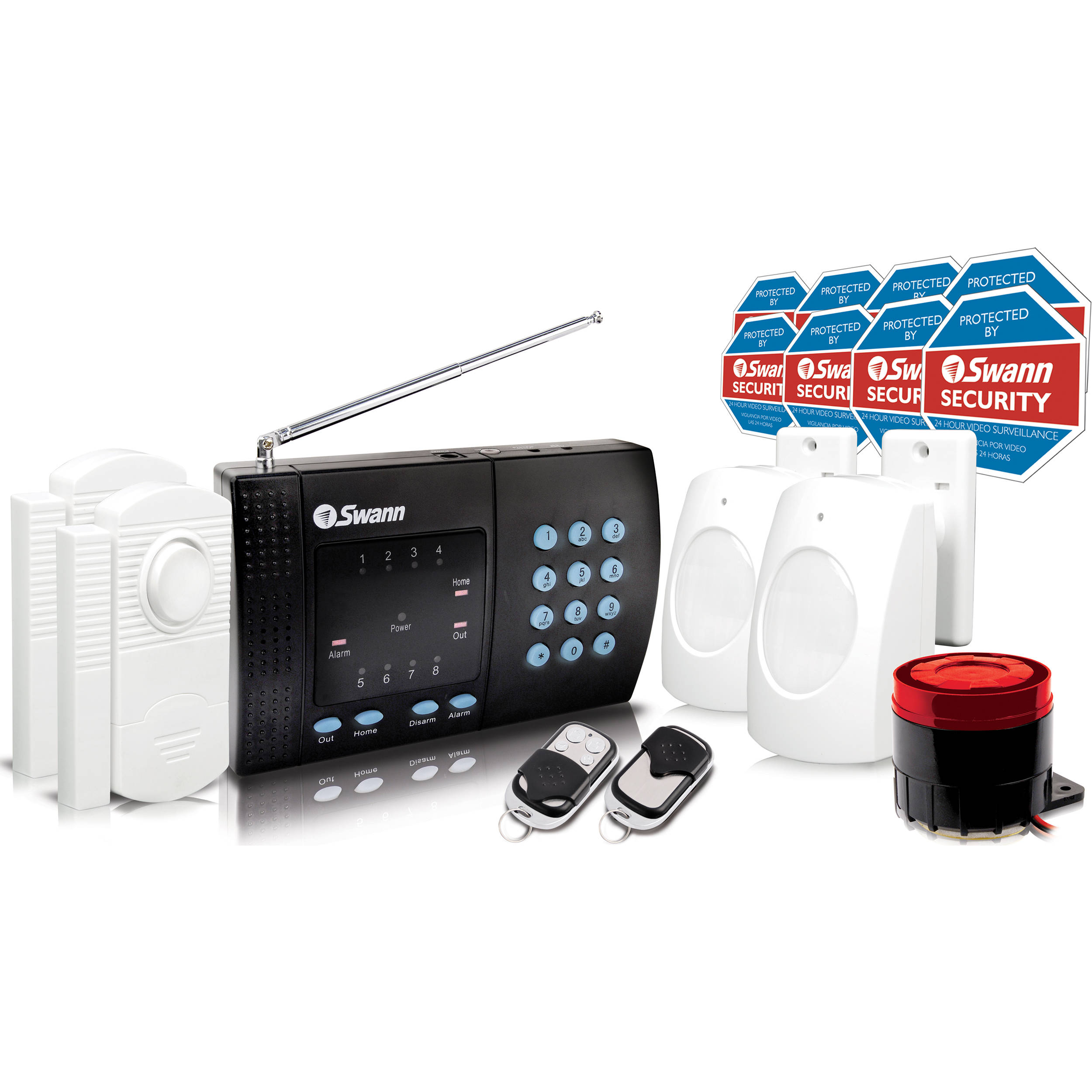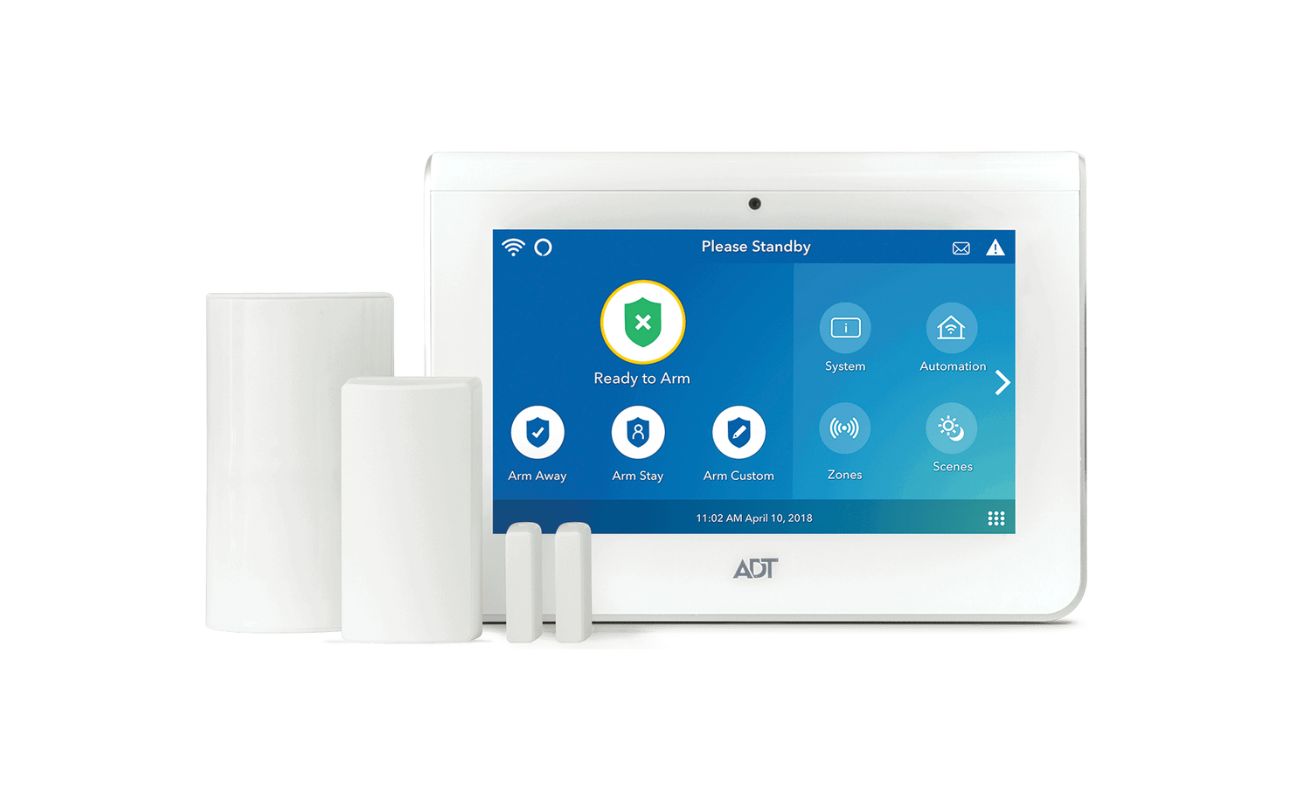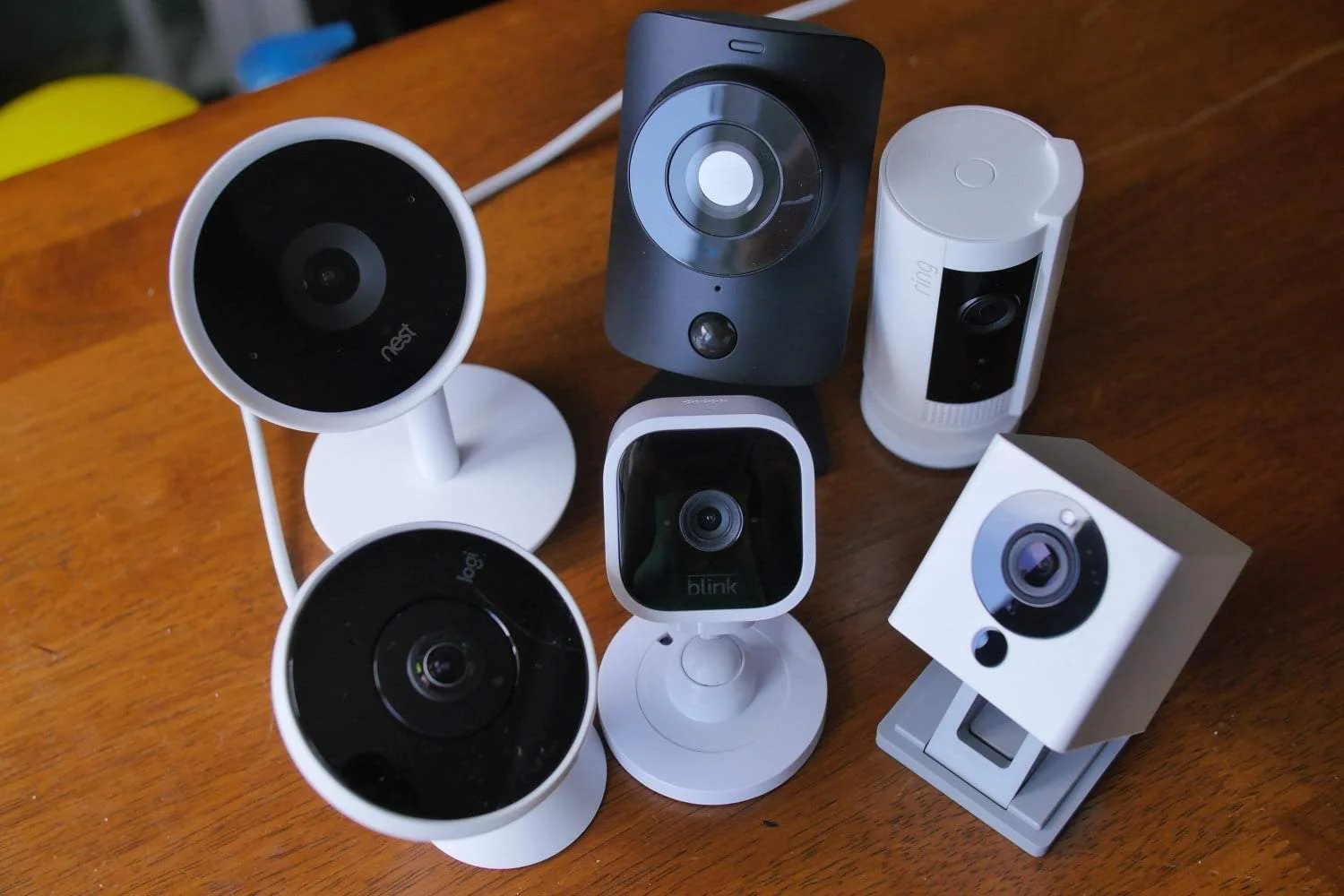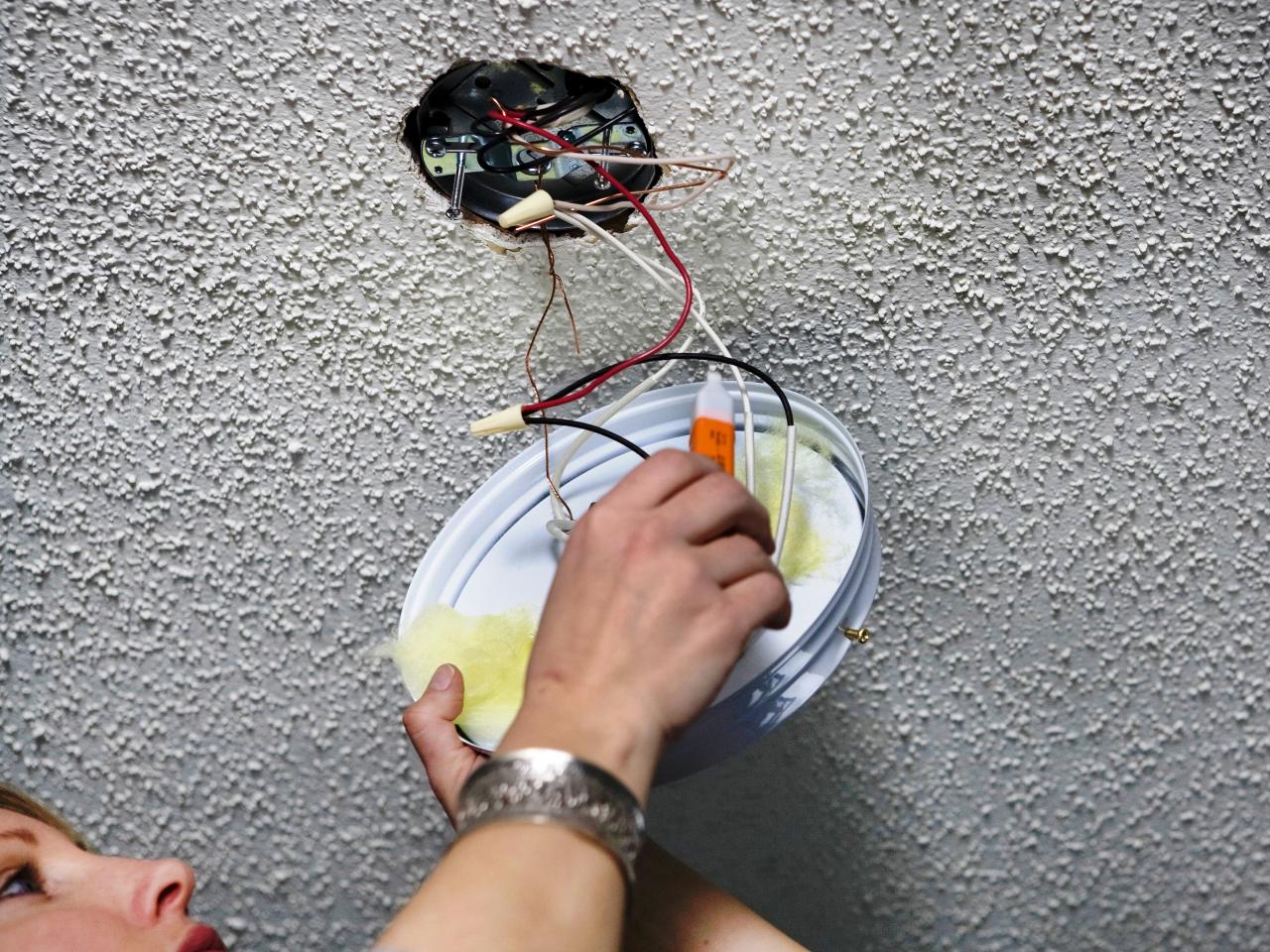Home>Home Security and Surveillance>How To Convert Existing Wired Security System To Wireless
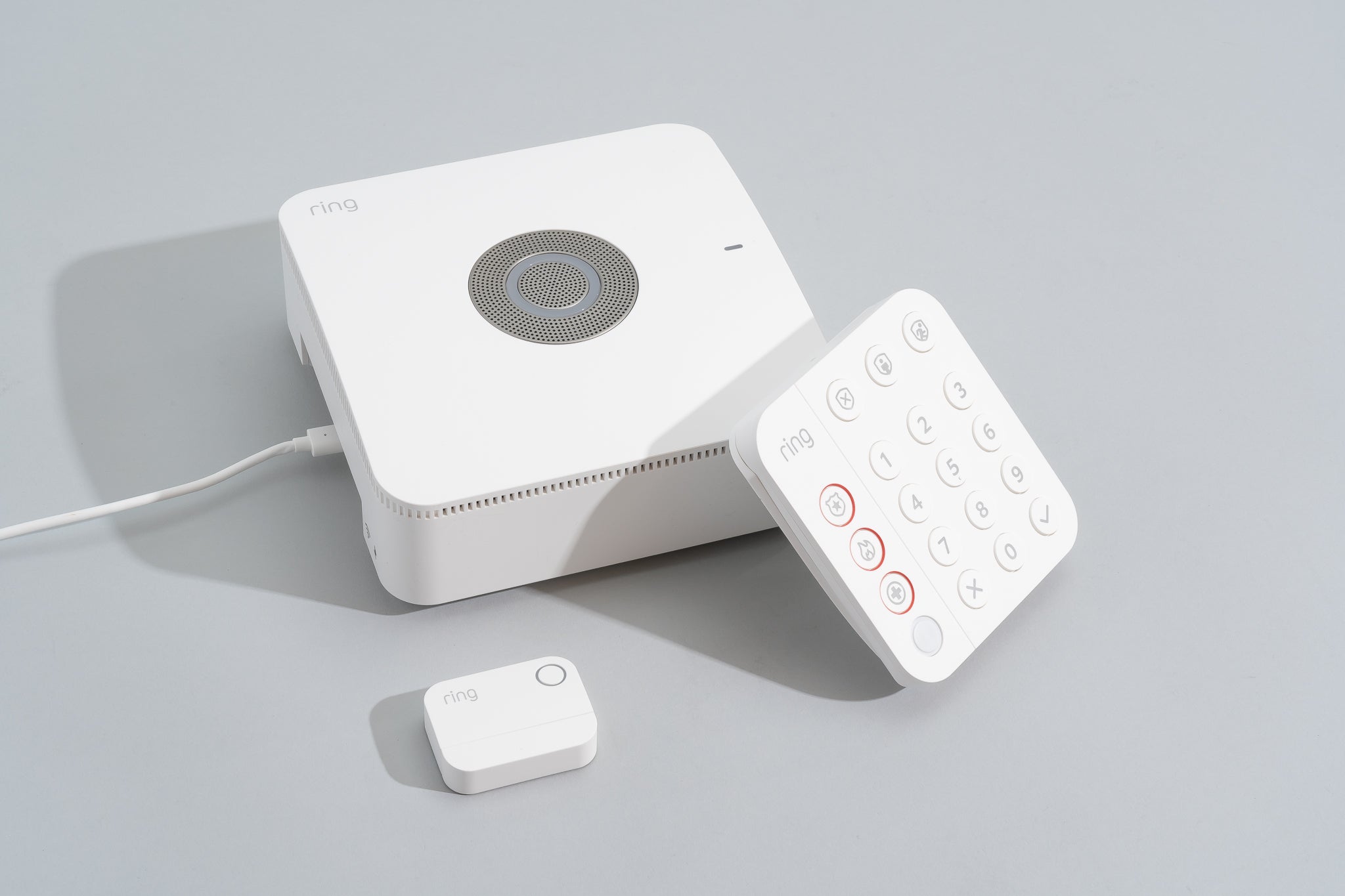

Home Security and Surveillance
How To Convert Existing Wired Security System To Wireless
Modified: March 6, 2024
Learn how to easily convert your existing wired security system to wireless for enhanced home security and surveillance. Explore our step-by-step guide now!
(Many of the links in this article redirect to a specific reviewed product. Your purchase of these products through affiliate links helps to generate commission for Storables.com, at no extra cost. Learn more)
Introduction
Welcome to our comprehensive guide on how to convert your existing wired security system to a wireless one. In today’s technology-driven world, wireless systems have become the new standard for home security and surveillance. Not only do they offer increased flexibility and convenience, but they also provide advanced features and improved accessibility.
If you currently have a wired security system installed in your home, you may be wondering why you should consider converting to a wireless system. The benefits are numerous. First and foremost, a wireless system eliminates the need for cumbersome wires running throughout your home, making installation and maintenance much simpler. Additionally, wireless systems are more versatile, allowing you to place cameras and sensors in locations that may have been previously inaccessible.
Furthermore, wireless security systems often come with advanced features such as remote access, mobile alerts, and integration with smart home devices. These features provide peace of mind and make it easier than ever to monitor and control your home security from anywhere in the world.
In this guide, we will walk you through the process of converting your wired security system to a wireless one. We will discuss the necessary components, provide a step-by-step guide for the conversion, offer testing and troubleshooting tips, and provide additional considerations for a successful transition.
Whether you are a tech-savvy homeowner looking to upgrade your home security or simply want to improve the efficiency and ease of use of your existing system, this guide will provide you with the knowledge you need to successfully convert your wired security system to wireless. So let’s get started!
Key Takeaways:
- Upgrade to wireless security for easy installation, remote access, and advanced features, providing peace of mind and enhanced home protection.
- Understand your existing system, select compatible wireless components, and follow a step-by-step guide for a successful conversion to wireless security.
Benefits of Converting to a Wireless Security System
Converting your existing wired security system to a wireless one offers a range of benefits that can enhance your home security and surveillance capabilities. Let’s explore some of the key advantages:
- Increased Flexibility and Convenience: One of the primary benefits of a wireless security system is the freedom it provides. With no wires to worry about, you can easily install cameras, sensors, and other components in various locations around your home. This flexibility allows you to monitor areas that were previously inaccessible, providing comprehensive coverage for your property.
- Easier Installation and Maintenance: Unlike wired systems, which require drilling holes and running cables, wireless systems are much easier to install. This eliminates the need for professional assistance and allows you to set up your security system on your own. Additionally, maintenance becomes hassle-free as there are no wires to untangle or replace.
- Remote Access and Mobile Alerts: Wireless security systems often come equipped with remote access capabilities. This means you can monitor your home, view live camera feeds, and receive instant alerts directly on your smartphone or tablet. Whether you’re at work, on vacation, or just in another room, you can stay connected to your home security at all times.
- Integration with Smart Home Devices: Wireless security systems seamlessly integrate with other smart home devices, enhancing the overall functionality and convenience. You can connect your security system to voice assistants, such as Amazon Alexa or Google Assistant, and control your devices with voice commands. Integration with smart locks, lights, and thermostats also allows for easier home automation and energy management.
- Upgraded Features and Technology: Wireless security systems often come packed with advanced features and technology. High-definition cameras, night vision capabilities, motion sensors, and two-way audio are just a few examples of the modern features you can expect. These advancements provide clearer images, better detection, and more effective surveillance.
- Scalability and Expandability: Wireless systems are highly scalable, allowing you to add or remove components as needed. Whether you want to expand your security coverage by adding more cameras or sensors, or simply reposition existing ones, wireless systems make it easy to make adjustments as your needs change.
By converting to a wireless security system, you gain increased flexibility, convenience, and access to advanced features. These benefits not only enhance your overall home security but also provide a user-friendly and integrated experience for your peace of mind. So, don’t miss out on the advantages of a wireless security system – make the switch today!
Understanding Your Existing Wired Security System
Before you can successfully convert your wired security system to a wireless one, it’s important to have a clear understanding of how your current system operates. This will help you identify the necessary components for the conversion and ensure a smooth transition. Here are some key aspects to consider:
Control Panel: The control panel is the brain of your security system. It acts as a central hub that communicates with all the connected devices, such as cameras, sensors, and alarm systems. Take note of the make and model of your control panel, as it may impact compatibility with wireless components.
Wiring Layout: Examine the wiring layout of your current system. Take note of the types of cables and connections used, as well as the locations where the wires are routed. This will help you understand the configuration of your system and determine the best approach for the conversion.
Cameras and Sensors: Identify the types of cameras and sensors installed in your wired system. This includes indoor and outdoor cameras, motion detectors, door/window sensors, and any other devices integrated into your security setup. Understanding the capabilities and specifications of these devices will help you select compatible wireless alternatives.
Power Supply: Determine how your wired system is powered. Most wired security systems use a combination of AC power and backup batteries. Confirm the voltage and power requirements of your existing setup to ensure compatibility with wireless components.
Monitoring Service: If you currently have a monitoring service for your wired security system, contact the provider to discuss the conversion process. They may have specific requirements or recommendations for transitioning to a wireless system while retaining monitoring services.
Existing Infrastructure: Consider the infrastructure of your home, such as the layout, construction materials, and potential obstructions. This will help you assess the wireless range and coverage required for your new system and plan the placement of devices accordingly.
By understanding the key components and specifications of your existing wired security system, you can make informed decisions during the conversion process. This knowledge will guide you in selecting the right wireless components and ensure compatibility for a seamless transition. With a clear understanding of your current system, you’re well-prepared to move on to the next step: selecting the necessary components for the conversion.
Components Needed for the Conversion
When converting your existing wired security system to a wireless one, you will need to gather the necessary components to ensure a successful transition. These components will allow you to replace the wired devices with their wireless counterparts while maintaining the functionality and effectiveness of your security system. Here are the key components you will need:
- Wireless Cameras: Replace your wired cameras with wireless cameras that are compatible with your new system. Look for cameras that offer high-definition video quality, night vision capabilities, and motion detection features. Make sure they are compatible with the wireless protocol used by your wireless system, such as Wi-Fi or Bluetooth.
- Wireless Sensors: Replace your wired sensors, such as door/window sensors and motion detectors, with wireless equivalents. These sensors should communicate wirelessly with the central control panel of your security system. Look for sensors that offer reliable detection and long battery life.
- Control Panel: Depending on the compatibility of your existing control panel and the wireless system you choose, you may need to replace the control panel. Look for a wireless control panel that is compatible with your new wireless devices and offers the necessary features, such as remote access and mobile alerts.
- Wireless Receiver/Hub: If your existing control panel is not compatible with wireless devices, you will need to add a wireless receiver or hub. This device acts as a bridge between your wireless devices and the control panel, allowing them to communicate effectively. Make sure the receiver or hub is compatible with the specific wireless protocol of your system.
- Power Supply: Wireless devices require power, so you will need to consider the power supply for your new components. Most wireless devices use batteries, so ensure you have an adequate supply of batteries and a system for regular maintenance and replacements. Alternatively, you could opt for devices that can be powered by an AC adapter or have built-in rechargeable batteries.
- Wireless Range Extenders: Depending on the size and layout of your home, you may need to add wireless range extenders to ensure optimal coverage. These devices amplify the wireless signal, allowing it to reach areas that are farther away from the control panel or have poor signal strength.
It’s important to note that the specific components you need may vary based on the requirements of your existing system and the wireless system you choose. Before purchasing any components, carefully review their compatibility with your current setup and ensure they meet your specific needs.
By gathering these essential components, you are well on your way to successfully converting your wired security system to a wireless one. In the next section, we’ll provide you with a step-by-step guide to help you through the conversion process.
Consider using a wireless converter kit to upgrade your existing wired security system to wireless. This kit can easily connect to your current system, allowing you to keep your sensors and contacts while enjoying the benefits of a wireless setup.
Step-by-Step Guide to Converting Your Wired Security System to Wireless
Converting your existing wired security system to a wireless one may seem like a daunting task, but with the right approach, it can be a smooth and straightforward process. Follow these step-by-step instructions to ensure a successful conversion:
- Assess Your Current System: Begin by thoroughly understanding your existing wired security system, including the layout, wiring, and devices. Take note of the make and model of your control panel, cameras, and sensors. This information will help you select compatible wireless components.
- Select a Wireless System: Research and choose a wireless security system that is compatible with your existing components and offers the features you require. Look for a system that supports the same wireless protocol as your devices, such as Wi-Fi or Bluetooth.
- Purchase Wireless Components: Based on your assessment and system selection, purchase the necessary wireless cameras, sensors, control panel, wireless receiver/hub, power supply, and any other components required for the conversion. Ensure that the wireless devices are compatible with your chosen system and meet your specific needs.
- Plan Device Placement: Determine the ideal locations for your wireless devices. Consider factors such as coverage, range, and line of sight. Strategically position the cameras and sensors to ensure optimal security coverage for your home.
- Uninstall Wired Devices: Carefully uninstall the wired cameras, sensors, and any other devices from your existing system. Remove the wiring and disconnect any power sources. Take note of the existing wiring connections for reference during the installation of the wireless devices.
- Install Wireless Devices: Follow the manufacturer’s instructions to install the wireless cameras, sensors, control panel, and any additional components. Ensure that the devices are securely mounted and properly connected to the wireless receiver or hub. Take care to position the devices as planned for optimal coverage.
- Configure and Test: Once the wireless devices are installed, configure them according to the manufacturer’s instructions. This typically involves connecting them to your wireless network and setting up any desired settings or features. Test each device and verify that it is functioning correctly.
- Connect to Monitoring Service: If you have a monitoring service for your security system, contact them to update your information and provide any necessary details about the conversion. Update your account with the new wireless system’s information, including the control panel and any other relevant details.
- Test System and Perform Adjustments: Perform a thorough testing of your newly installed wireless security system. Check the functionality of each device, including camera feeds, motion detection, and sensor triggers. Make any necessary adjustments, such as repositioning devices or configuring settings, to ensure optimal performance.
- Update and Maintain: Regularly update the firmware and software of your wireless devices to ensure they have the latest security patches and feature enhancements. Replace batteries as needed and perform routine maintenance to keep your system in optimal working condition.
By following these step-by-step instructions, you will be able to successfully convert your existing wired security system to a wireless one. The process may require some time and effort, but the benefits of a wireless system, including increased convenience and advanced features, will far outweigh the initial investment. Enjoy the improved flexibility and enhanced home security that comes with a wireless system!
Testing and Troubleshooting the Converted Wireless System
Once you have converted your wired security system to a wireless one, it’s crucial to thoroughly test and troubleshoot the system to ensure everything is functioning as expected. Here are some important steps to follow:
- Camera Feeds: Verify that all wireless cameras are providing a clear, high-quality video feed. Check each camera’s field of view to ensure it covers the desired areas and adjust their positions if necessary. Test the live view and recording capabilities of each camera.
- Motion Detection and Sensor Triggers: Test the motion detection capabilities of your wireless sensors, such as PIR motion detectors and door/window sensors. Walk in front of the motion sensors to confirm they trigger alerts or activate other devices, such as lights or sirens. Open and close doors and windows to ensure the sensors properly detect these actions.
- Connection Stability: Check the stability of the wireless connection between devices and the control panel or receiver. Ensure that all devices maintain a strong and consistent connection. If you notice any connectivity issues, consider relocating devices or adding wireless range extenders to improve signal strength.
- Mobile Access and Alerts: Test the remote access capabilities of your wireless system. Use your smartphone or tablet to access the system’s app or web portal and ensure you can view live camera feeds, receive alerts, and control your security system remotely. Verify that the alerts and notifications are being sent promptly and accurately.
- Alarm Activation: Test the alarm activation feature of your wireless security system. Arm the system and trigger a sensor or camera intentionally to ensure that the alarm is activated, and alerts are sent to the appropriate channels, such as a monitoring service or your mobile device.
- Battery Life: Monitor the battery life of your wireless devices, such as cameras and sensors. Depending on the manufacturer’s specifications, batteries may need to be replaced or recharged periodically. Keep track of battery usage and establish a maintenance routine to prevent any devices from becoming inactive due to battery depletion.
- Software Updates: Regularly check for software updates for your wireless devices and control panel. Installing the latest updates will ensure that your system has the latest security patches and feature enhancements. Follow the manufacturer’s instructions to properly update the firmware and software of each device.
- Test Monitoring Service: If you have a monitoring service, contact them to perform a test of the system’s connection to their monitoring center. This will ensure that they receive the appropriate signals and can respond effectively in the event of an alarm. Verify that the monitoring service is properly receiving alerts and notifications.
- Troubleshooting: If you encounter any issues during the testing process, consult the troubleshooting guide provided by the manufacturer or contact their customer support for assistance. Common issues may include connectivity problems, camera positioning, false alarms, or device malfunctions. Troubleshoot these issues systematically to determine the root cause and implement the necessary solutions.
By thoroughly testing and troubleshooting your converted wireless system, you can identify and address any issues early on, ensuring reliable and efficient operation. Regular monitoring, software updates, and proactive maintenance will help maintain the system’s performance over time. Enjoy the peace of mind that comes with a fully functional and effective wireless security system in your home.
Additional Tips and Considerations
Converting your wired security system to a wireless one involves careful planning and execution. Here are some additional tips and considerations to keep in mind throughout the process:
- Research and Compatibility: Before purchasing any wireless components, thoroughly research their compatibility with your existing wired system and the wireless system you plan to use. Ensure that the devices and protocols are compatible to avoid any compatibility issues during installation.
- Installation Assistance: If you are not comfortable with DIY installation, consider hiring a professional to assist you. They can ensure proper installation, help with system configuration, and provide guidance on optimal device placement.
- Secure Network: Protect your wireless security system by setting up a secure Wi-Fi network and using a strong password. This will prevent unauthorized access to your system and ensure the privacy and security of your surveillance footage.
- Backup Power: Consider using a battery backup system to ensure that your wireless security system remains operational during power outages. This will provide uninterrupted protection for your home, even when the main power source is unavailable.
- Familiarize Yourself with Features: Take the time to familiarize yourself with all the features and capabilities of your new wireless security system. Read the user manual, explore the settings, and experiment with various functions to make the most out of your system’s capabilities.
- Maintain Adequate Wi-Fi Signal Strength: Ensure that your wireless devices have a strong and stable Wi-Fi signal. If necessary, add Wi-Fi range extenders or access points to improve coverage in areas with weak signals, such as basements or large outdoor spaces.
- Regular System Checks: Schedule regular system checks to ensure that all cameras, sensors, and other devices are functioning properly. Check for any signs of physical damage, tampering, or obstructions that may hinder their operation.
- Consider Cloud Storage: If your wireless security system supports cloud storage, consider subscribing to a cloud storage service for your surveillance footage. This provides an off-site backup and allows you to access and review recordings from anywhere, even if the local system is tampered with or damaged.
- Notify Authorities: If you have an alarm system connected to a monitoring service, inform them of the conversion to a wireless system. Provide them with any necessary information, such as new contact details, device types, and verification codes, to ensure that they can effectively respond to any alarms or emergencies.
- Proper Device Maintenance: Regularly clean and maintain your wireless devices to ensure optimal performance. Keep the cameras free from dirt and debris, replace batteries as needed, and promptly address any physical or technical issues that arise.
By keeping these tips and considerations in mind, you can make the most out of your converted wireless security system. A well-maintained and properly configured system will provide you with reliable home security and surveillance, giving you peace of mind knowing that your property is protected.
Conclusion
Converting your existing wired security system to a wireless one is a smart move that offers numerous benefits and advancements in home security and surveillance. The flexibility, convenience, and enhanced features of a wireless system make it a worthwhile investment for homeowners looking to upgrade their security measures.
Throughout this comprehensive guide, we have discussed the benefits of converting to a wireless security system, the importance of understanding your existing wired system, and the components needed for a successful conversion. We have also provided a step-by-step guide to help you through the conversion process, along with tips for testing, troubleshooting, and further considerations to ensure optimal system performance.
As you embark on this conversion, remember to carefully assess your current system, select compatible wireless components, and plan the placement of devices for maximum coverage. Test and troubleshoot the system thoroughly to ensure all devices are functioning as expected. Regularly update firmware and software, and maintain the system to keep it operating at its best.
A converted wireless security system offers increased convenience, remote access, integration with smart home devices, and scalability for future expansion. It provides peace of mind, ensuring that your home is protected and allowing you to monitor and control your security from anywhere.
So, don’t hesitate to take the necessary steps and convert your wired security system to a wireless one. With the benefits, features, and advancements offered by a wireless system, you can enjoy a new level of convenience, flexibility, and control over your home security and surveillance.
Remember, the safety and security of your home and loved ones are of utmost importance. By embracing the wireless revolution in home security, you are taking a proactive approach to protect what matters most. So, start planning and converting your wired security system to wireless today, and create a safer and more secure home environment for everyone.
Frequently Asked Questions about How To Convert Existing Wired Security System To Wireless
Was this page helpful?
At Storables.com, we guarantee accurate and reliable information. Our content, validated by Expert Board Contributors, is crafted following stringent Editorial Policies. We're committed to providing you with well-researched, expert-backed insights for all your informational needs.
